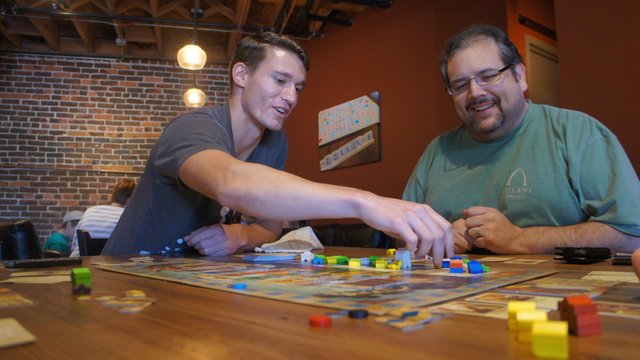5- Steps to getting what you want out of the game we call life.

There are five things that you have to do to get what you want out of life. First, you have to choose your goals, which will determine your direction. Then you have to design a plan to achieve your goals. On the way to your goals, you will encounter problems. As I mentioned, these problems typically cause pain. The most common source of pain is in exploring your mistakes and weaknesses. You will either react badly to the pain or react like a master problem solver. That is your choice.
"Growth is painful. Change is painful. But nothing is as painful as staying stuck somewhere you don't belong."
- Mandy Hale
To figure out how to get around these problems you must be calm and analytical to accurately diagnose your problems. Only after you have an accurate diagnosis of them can you design a plan that will get you around your problems. Then you have to do the tasks specified in the plan. Through this process of encountering problems and figuring out how to get around them, you will become progressively more capable and achieve your goals more easily. Then you will set bigger, more challenging goals, in the same way that someone who works with weights naturally increases the poundage.
This is the process of personal evolution, which I call the 5-Step Process:
In other words, “The Process” consists of five distinct steps:
a) Have clear goals.
b) Identify and don’t tolerate the problems that stand in the way of achieving your goals.
c) Accurately diagnose these problems.
d) Design plans that explicitly lay out tasks that will get you around your problems and on to your goals.
e) Implement these plans—i.e., do these tasks.
You need to do all these steps well in order to be successful.
Before discussing these individual steps in more detail, I want to make a few general points about the process.
1) You must approach these as distinct steps rather than blur them together.
For example, when setting goals, just set goals (don’t think how you will achieve them or the other steps); when diagnosing problems, just diagnose problems (don’t think about how you will solve them or the other steps). Blurring the steps leads to suboptimal outcomes because it creates confusion and short-changes the individual steps. Doing each step thoroughly will provide information that will help you do the other steps well, since the process is iterative.
2) Each of these five steps requires different talents and disciplines.
Most probably, you have lots of some of these and inadequate amounts of others. If you are missing any of the required talents and disciplines, that is not an insurmountable problem because you can acquire them, supplement them, or compensate for not having them, if you recognise your weaknesses and design around them. So you must be honestly self-reflective.
3) It is essential to approach this process in a very clear-headed, rational way rather than emotionally.
Figure out what techniques work best for you; e.g., if emotions are getting the better of you, take time out until you can reflect unemotionally, seek the guidance of calm, thoughtful others, etc.

To help you do these things well—and stay centered and effective rather than stressed and thrown off by your emotions—try this technique for reducing the pressure: treat your life like a game or a martial art. Your mission is to figure out how to get around your challenges to get to your goals. In the process of playing the game or practicing this martial art, you will become more skilled. As you get better, you will progress to ever-higher levels of the game that will require—and teach you—greater skills. I will explain what these skills are in the next section. However, the big and really great news is that you don’t need to have all of these skills to succeed!
You just have to 1) know they are needed; 2) know you don’t have some of them; and 3) figure out how to get them (i.e., either learn them or work with others who have them).

This particular game—i.e., your life—will challenge you in ways that will be uncomfortable at times. But if you work through this discomfort and reflect on it in order to learn, you will significantly improve your chances of getting what you want out of life. By and large, life will give you what you deserve and it doesn’t give a damn what you “like.” So it is up to you to take full responsibility to connect what you want with what you need to do to get it, and then to do those things—which often are difficult but produce good results—so that you’ll then deserve to get what you want.
That’s just the way it is, so you might as well accept it. Once you accept that playing the game will be uncomfortable, and you do it for a while, it will become much easier (like it does when getting fit). When you excel at it, you will find your ability to get what you want thrilling. You’ll see that excuses like “That’s not easy” are of no value and that it pays to “push through it” at a pace you can handle. Like getting physically fit, the most important thing is that you keep moving forward at whatever pace you choose, recognising the consequences of your actions. When you think that it’s too hard, remember that in the long run, doing the things that will make you successful is a lot easier than being unsuccessful. The first- order consequences of escaping life’s challenges may seem pleasurable in the moment, but the second- and third-order consequences of this approach are your life and, over time, will be painful. With practice, you will eventually play this game like a ninja, with skill and a calm centeredness in the face of adversity that will let you handle most of your numerous challenges well.
However, you will never handle them all well: mistakes are inevitable, and it’s important to recognise and accept this fact of life. The good news, as I have mentioned, is that most learning comes through making mistakes—so there is no end to learning how to play the game better. You will have an enormous number of decisions to make, so no matter how many mistakes you make, there will be plenty of opportunities to build a track record of success.
That’s basically the whole concept. Let’s pause and reflect on this before moving on. I will explain this 5- Step Process in detail in my following post.
Thank You

Trade on Binance. Where the fees are only 0.05%.

Thank you for sharing your posts with us. This post was curated by TeamMalaysia as part of our community support. Looking forward for more posts from you.
To support the growth of TeamMalaysia Follow our upvotes by using steemauto.com and follow trail of @myach
Vote TeamMalaysia witness bitrocker2020 using this link vote bitrocker2020 witness